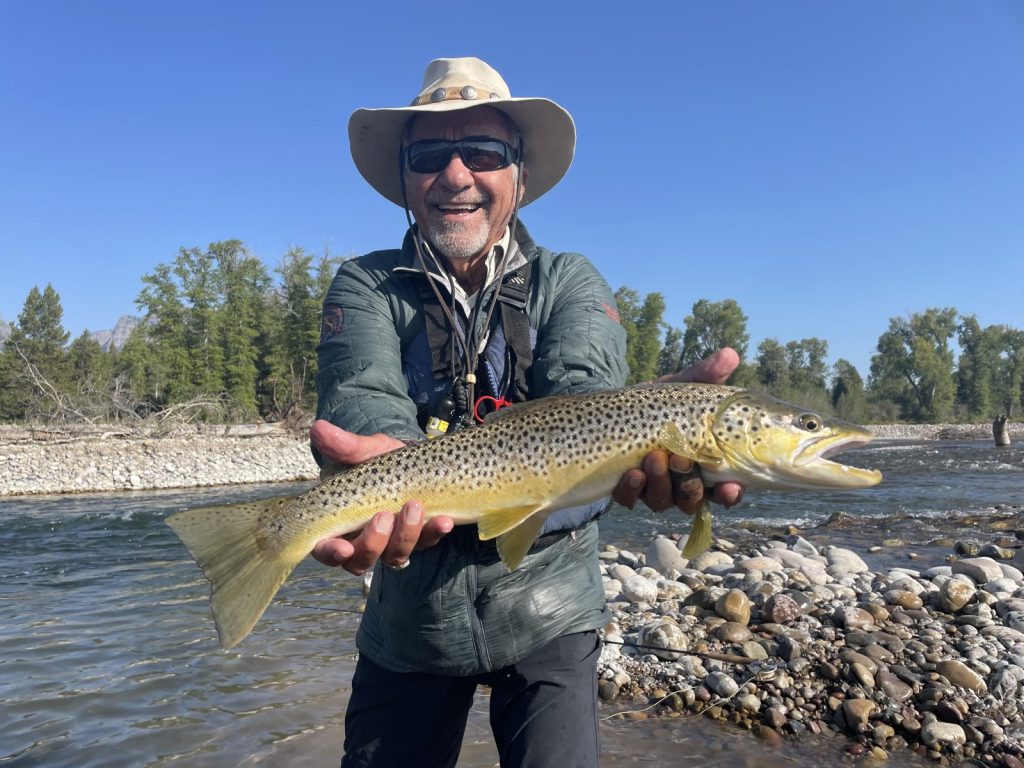
Snake River
Claassenia are peaking and the best action is coming on attractors that are deliberately moved when fished along banks, structure, troughs, seams, and riffle current margins. PMDs have been making more of an appearance from around 12:30 pm until 4pm and Hecuba is also coming out, although not a true surge of bugs quite yet. Their imitations are working best in riffles, side channels, slow current margins of seams, eddies, and banks with moderate currents. Grasshoppers are out in as good of numbers as they have been throughout August. Parachute Hoppers, Dave’s Hoppers, and Morrish Hoppers are performing well when fished along banks, especially those with moderate to fast currents.
Streamers remain hit-or-miss. When they are working, dozens of fish are in the cards. On slower days, you will have to work quite a bit to get into numbers. Moderately sized patterns are working best with no real difference in terms of bright or darker imitations. Target slower waters – banks, riffle pools, slow current margins on seams, and eddies – and go with slow to moderate retrieves that are steady with limited pauses in line strips. It still is worthwhile to give a countdown to your streamer after your final cast, particularly the slower water you are targeting.
South Fork
Flows from Palisades stand at just under 9,000cfs. Mutant stones remain a prime focus, particularly in the morning hours from around 7:30am until around 11am when skittering imitations along banks with slow to moderate currents, troughs, the inside turn and current margin of riffles, and along seams. Expect action on these flies to slow considerably around and after 12pm. There can still be action on these patterns due to the presence of grasshoppers, although traditional hopper patterns are producing more consistently. PMDs are popping here and there but emergences are again waning. When they are out, which will generally be from around noon until 3pm, focus primarily on riffles, seams, side channels with slow to moderate currents, and eddies.
Streamers have been working best in the canyon reach but are certainly worth using on all reaches. Go with both larger and moderately sized patterns on floating lines, hover lines, or short sinking tips in the INT to 6ips range and target banks, troughs, riffles pools, seams, and parallel drop-offs.
Flat Creek
Now is a good time to be hitting Flat Creek in the morning hours (sunrise to 9:30 am) and early evening (5 pm to dusk) when there is decent surface action on caddis and PMDs. Tricos are waning but there are still some from around 9am to 1pm. Water temps have cooled with the weather over the past two weeks, but current warm temps makes it a good idea to keep a thermometer handy and adjust practices if temps creep over 68 degrees. There is still good action on damsel and dragonfly nymphs throughout the day on floating lines or short INT tips. Be sure to use figure-8 retrieves for the former and pinch retrieves for the latter.